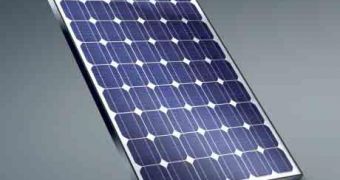Seamus Curran, a physics professor from the University of Huston, recently developed a new coating for solar panels, which supposedly helps improve their efficiency and significantly cuts down on maintenance costs simply by keeping these green-oriented energy providers fresh and clean for longer periods of time.
As the researcher explains, the amount of power a solar panel can generate within a given period of time very much depends on how clean said solar panel is.
Thus, whenever dust, pollen, water and the like see it fit to stand between the photovoltaic cells and the sun, the overall efficiency of the solar panels decreases.
Therefore, maintenance need to be performed on a regular basis, something which more often than not translates into additional costs for the people or companies whose property the solar panels are.
Professor Curran further explains that his newly-developed nano-thin coating works wonders when it comes to tackling both of the above-mentioned issues, and therefore stands to really make a difference as far as the efficiency and popularity of the solar power industry is concerned.
“A dirty solar panel can reduce its power capabilities by up to 30 percent. The coating essentially makes the panel self-cleaning,” Seamus Curran explained in one of his most recent interviews.
The News Department for the University of Houston informs us that, for the time being, Self-Cleaning Nano Hydrophobic layer succeeded in passing laboratory tests with flying colors, and that field trials are soon to be conducted at an engineering company in North Carolina.
Should things go as planned, this new technology could soon hit the markets and become available for households and businesses wishing to improve on the efficiency of their solar systems.
“This is where you see the university transitioning a technology from the lab to the community and making an economic impact,” commented professor Curran with respect to his new solar panel coating.

 14 DAY TRIAL //
14 DAY TRIAL //